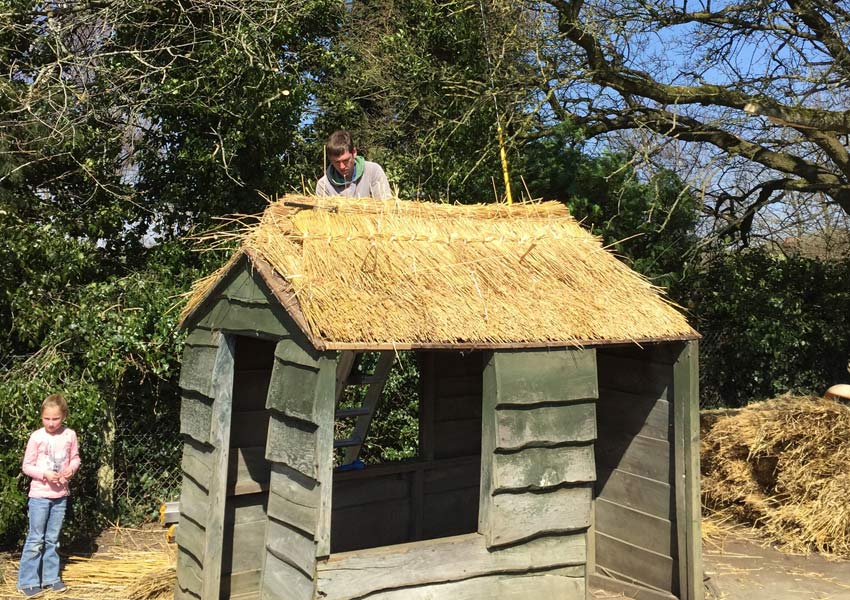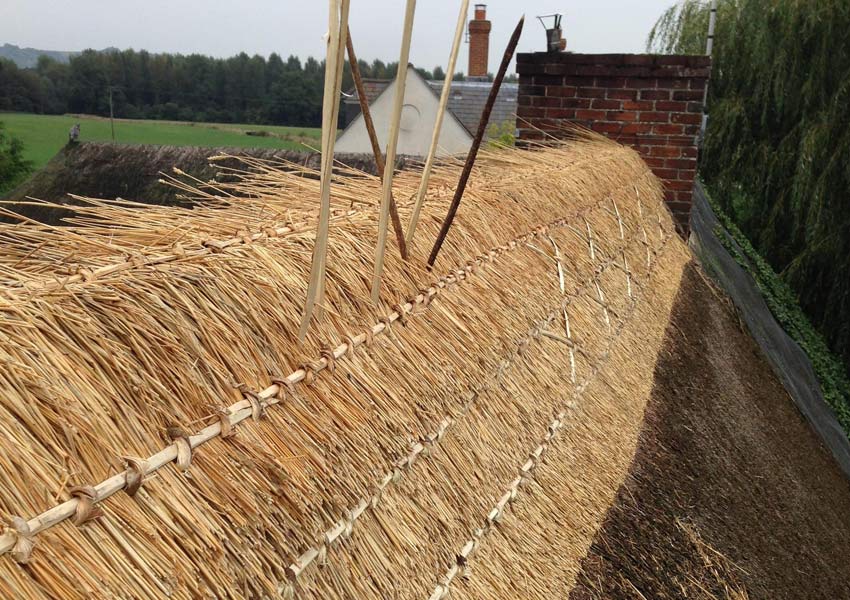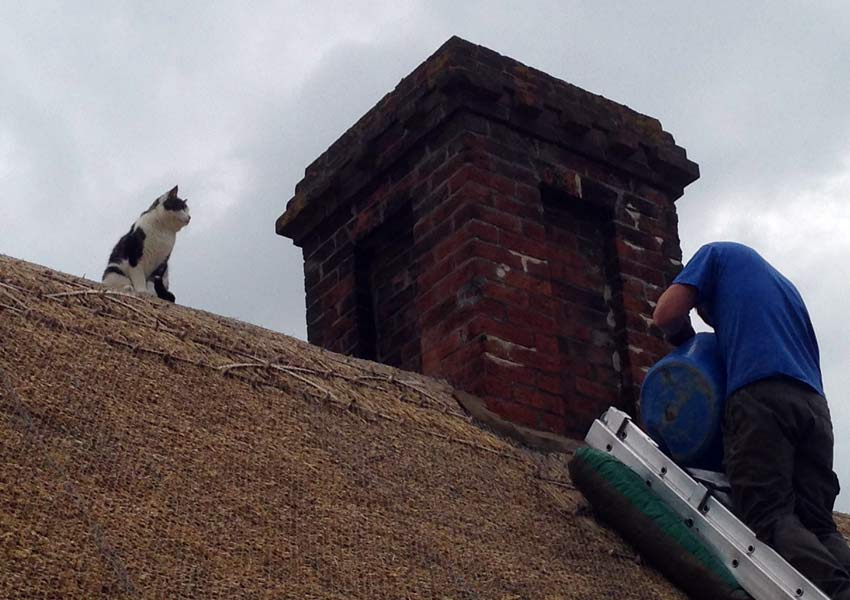
Thatching Services
A range of thatching services including identification of work required, type of thatch and ridge for your
property, thus maintaining it’s character and abiding by conservation regulations
FULL RE-THATCH SERVICE
Being able to supply all thatching services, if the condition of your roof requires it I can provide your property with a full re-thatch. First of all I will remove excessive existing straw, leaving a firm fixing base to which the new coat can be attached. This often requires the eves and barges to be completely replaced.
A re-thatch should be min of 12 inches thick. All my spars and ledgers are made from English hazel and used to fix the straw to the existing roof and form the pattern work. The roof is finally covered in wire netting to protect it from birds and external vermin damage. The wire will be galvanised with 19mm holes and 22 gauge wire.
Finally, around chimneys and joining walls a mortar fillet will be applied. Alternatively, if specified before work starts, lead flashing can be used. Sometimes structural issues are identified when straw is removed, and these problems will require agreement with you as to what action is required to be taken.


NEW ROOF THATCHING SERVICES
Whilst not as common, some new builds in conservation areas, plus out buildings and summer houses, often require to be thatched from scratch.
A new thatch has the same standards applied as for a re-thatch, but I recommend it has two coats of straw. The first coat is applied by screw ties and bars with minimum straw of 9 inches thick on top of fire boarding supplied and fitted by the builder. It is also recommended to be allow this layer to settle before the top coat of minimum of 12 inches is applied. The advantage of this thatching service is that it gives additional insulation and a roof that can be more efficiently maintained and longer life.
If one coat only is applied this will be fixed in the same way to fire boarding as for undercoating, using screw ties, steel bars or hazel rods with a straw coat thickness of minimum fourteen inches.
Modern fire break materials are normally specified by the Architect and fitted by the builder before thatching starts.
RE-RIDGING & REPAIRS
The ridge performs the important function of providing a weather tight seal along the apex of the thatch and requires renewal every 10 years, regardless of the overall condition of the thatch.
The ridging material should be laid to a sufficient thickness & density to protect the top course fixings along the apex of the roof. It should be laid ‘in pitch’ with the main coatwork to ensure efficient water run-off, with surface securing spars positioned horizontally to prevent water penetration of the ridge / coatwork.


MAINTENANCE & ADVICE
Besides the thatching services I offer, I am happy to advise all of my customers on maintenance that they can carry out themselves, as well as providing advice on how best to prolong the life of your thatch.
To ensure you get the maximum life from your thatch, it is advisable for you to check no climbing plants grow onto it, and that trees are not allowed to closely overhang. TV aerials, weather vanes, etc. are best not mounted on a chimney or over thatch where they can drip onto it.
Owners should monitor the ridge and if significant spars are missing and breaking up it may be time to seek further advice. If caught in time, it can make the difference between a more costly re-thatch or the cheaper option of a re- ridge and repairs.
